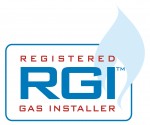Cavity Wall Insulation – FAQ
Cavity Wall Insulation – FAQ
Without a doubt more heat is lost through the walls of our homes than in any other way. A staggering thirty five percent of our domestic heat is wasted across un-insulated cavity walls which means that we are consuming energy far in excess of our needs.
New building regulations introduced by the government have called for an increase in the amount of insulation fitted in all new homes to make heating more efficient more economical to run and to help conserve the worlds natural resources. Soon we shall all be expected to save energy by insulating our homes to a required standard. For homes already completed or under construction we install injected bead Insulation. This is insulation that is blown into the wall cavity and provides excellent heat insulation for your home.
Below are examples of the bead used and should you require any further information we can meet with you to discuss the options available.
These images demonstrate the injected bead in place in the cavity of the wall.
Cavity Wall Insulation Frequently asked Questions
Q. What is a cavity wall
A. The external wall of a house is constructed of two ,masonry (brick or block) walls, with a cavity (gap) of at least 50mm between. Metal ties join the two walls together.
Q. How is cavity wall insulation installed
A. The cavity wall is injected with insulating materials by drilling holes in the external wall, through the mortar joint. Holes are generally of 22-25mm diameter and are “made good” after injection. Each hole is injected in turn, starting at the bottom.
Q. How long does it take
A. Cavity wall insulation normally takes around two hours to install, but the time does depend on the size of the house and other factors, such as access.
Q. Is my house suitable
A. Before the installation, the installing firm will undertake an assessment of your property to confirm that it is suitable for insulation. This assessment may be undertaken by a surveyor or the Technician before installation.
Q. Do i have to anything before the installation
A. The drilling process does create some vibration – so it would be wise to remove ornaments, particularly on external walls, for their safety and your peace of mind. The Technician will need access to all walls, so he will need to get inside attached garages, lean to sheds, conservatives etc. The insulation can only be really effective if all walls are done. If you have a wall right on the boundary you may like to mention to your neighbor, that the Technician will need to go onto their property.
Q. Is there much mess
A. The drilling process inevitably causes a little dust, which will be cleared at the completion of the job. It ma y be wise to remove vehicles from the drive and things close to the walls. This will also give the Technician better access for equipment and tools.
Q. Does the technician have to come into the house
A. The Technician must undertake checks before and after the installation, including any heating appliances, so it is essential that they have access inside the property. Apart from these checks , all the remaining work is carried out from the outside.
Q. My house is semi-detached, so how do they stop insulation going into my neighbors cavity
A. Assuming your neighbors house is not already insulated, the Technician will insert a cavity barrier at the party wall line. This is usually a length of bristle brush. Of course, if the neighbors house were to be insulated at the same time, the cavity barrier would not be needed.
Q. Are all instances of insulation the same
A. There are several different types of insulation available. We have chosen Supernova injected bead because they are the best solution on the market for Ireland. All systems of CWI (Cavity Wall Insulation) have been tested, assessed and approved by the Irish & British Board of Agreement.
All systems have a similar insulation value. Whichever system you decide upon, be sure the installer is recommended by the NASI and is an approved installer.
Q. Are the Technicians trained
A. All Technicians (team leaders) undergo training by the system supplier and the installing firm to ensure they are competent in CWI and carry a training card. Please feel free to ask to see the training card.
Q. How do I know that the walls are full
A. Each system has a defined pattern of holes, which has been tested to verify that it results in a complete fill. Most systems have an automatic cut out which actuates when the adjacent wall area is full. There is tolerance in the injection pattern so that the material will flow past the next injection hole.
Q. Is the insulation ” Dense”
A. No, as the insulation is contained within a masonry wall, it doesn’t need to be dense. For insulation and other purposes, a light density is better. Before installation, the Technician will undertake a quality test to ensure the insulation will go into the wall at the right density. He will also not the amount of material used, to know that sufficient insulation has been installed.
Note. Drilling a hole in the outer wall and testing the cavity fill with a rod or pencil will not provide meaningful information.
Q. What about the ventilators that are in the external wall
A. Ventilators supplying combustion air to fuel burning appliances must be safeguarded. Similarly ventilators at ground level that ventilate below timber floors must be safeguarded. The Technician will investigate them to check they are already sleeved. If they are not, the Technician will remove them and seal around them to stop them being blocked by the insulation. Other vents, which may be redundant, such as cavity vents or vents that used to supply air to open fires in bedrooms may be closed off. The Technician should discuss these with you. Redundant airbricks may be filled.
Q. What about filling the holes
A. The Technician will fill all the injection holes with mortar to match the existing as closely as possible. He will use a mix that closely matches the existing colour and texture. On pebbledash finishes, he will apply pebbles to the surface to match the existing finish. After weathering the holes are difficult to see.
Q. But my house has painted areas
A. Normally, the installing firm will not paint the injection holes. Unfortunately, even if the original paint is used, it may not match due to weathering. So it may be necessary for you to consider painting the area, after the mortar has dried.
You should discuss and agree what will be done with the installing firm.
Q. Will my house be warmer
A. Yes – IF your heating is not controlled by a thermostat. However if you have a thermostat, it will cut out the heating at the same temperature, so you may not notice the difference in the room with the thermostat. However, you will find that the temperature in other parts of your house improves, for example, the small bedroom on the corner. Your house will now retain heat for longer by 30%.
Q. Are there any maintenance or servicing requirements
A. No, not to the cavity wall insulation, but normal building maintenance is needed.
Q. How long will the insulation last
A. For the life of the building – the Irish & British Board of Agrément says so.
Q. If I am concerned after the installation, what should i do
A. Talk to the installing firm and tell them of your worries. A contract exists between you and the installer, so they must be given the opportunity to investigate your worries. They will help you.





